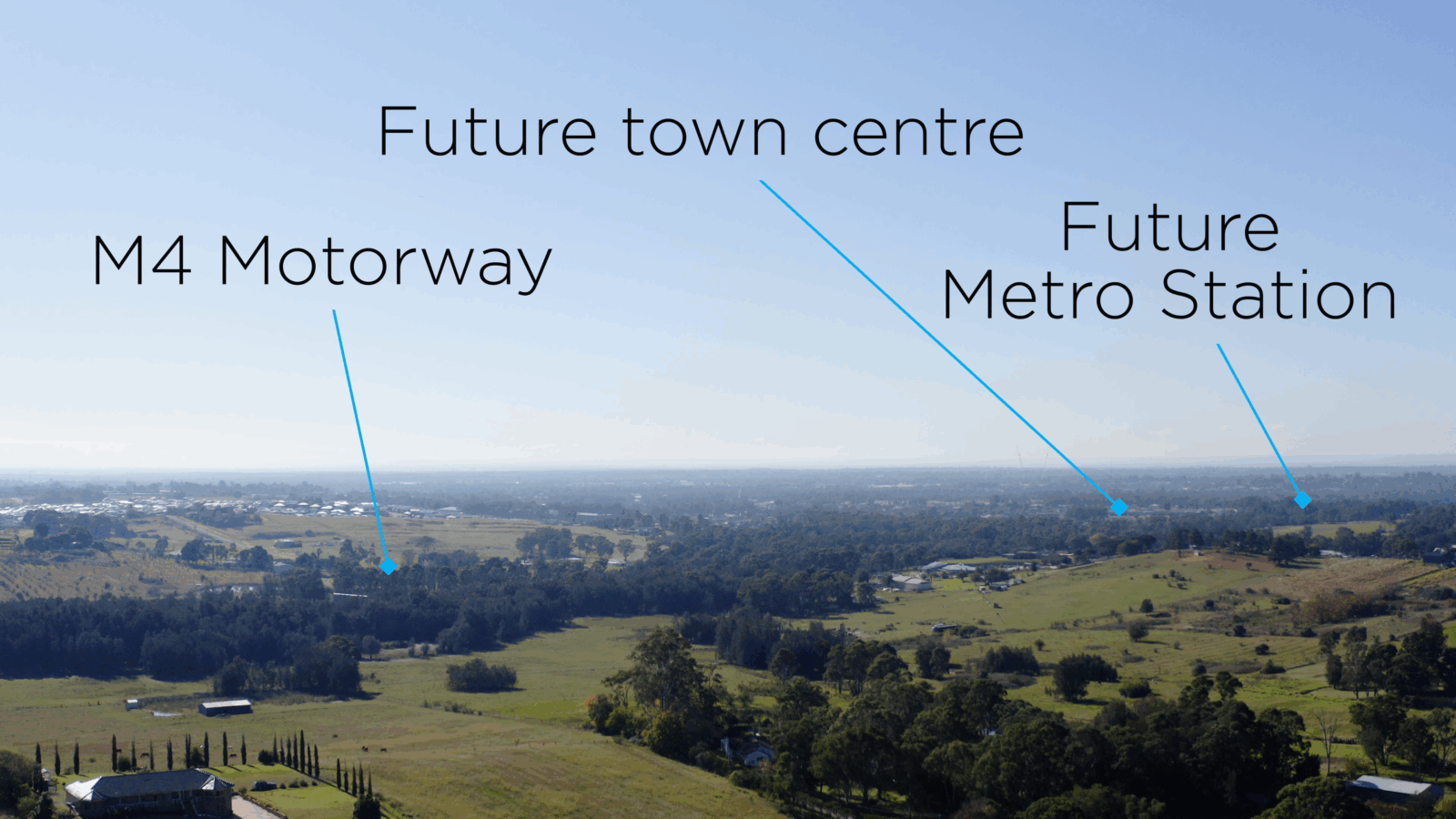In two pockets of western and southwestern Sydney, thousands of houses are rising from paddocks, roads are being built where there were none, and communities are beginning to take shape.
Over the next 30 years, more than 93,000 people are expected to call Appin and Orchard Hills home. But while the houses are being built and infrastructure is catching up, there’s something else desperately needed: churches that can welcome, serve, and share Jesus with these new neighbours from day one.
That’s why Sydney Anglican Property (SAP) has been strategically securing land in greenfields areas like Appin and Orchard Hills, ensuring that the church is not left scrambling for space once the opportunity has passed.

Watch drone footage of our two new sites in the video above. Left – the sites are located in two of the city’s fastest growing areas.
Appin
Just south of Campbelltown lies the town of Appin, currently home to a small Anglican chapel that seats around 20 people and has been ministering to the small township of Appin since 1844. But look ahead a few years, and Appin is set to explode. Over 50,000 people will move into the surrounding areas, including major developments in nearby Gilead and in Appin itself.
In preparation, SAP has acquired a five-hectare property on Appin Road just before major rezoning occurs across the road. It’s a strategic move, locking in a well-located site before land values soar. The site is just 40 minutes from the new Western Sydney Airport, 30 minutes from the northern suburbs of Wollongong, and sits on the key road that connects these developments to Campbelltown.
“We’re not just buying land for the sake of it,” says Jonathan Kerr, Manager of Greenfields at SAP. “We believe the gospel must be present where people are. We want future residents to arrive and discover that a local Anglican church is in their new suburb, ready to welcome them.
“But buying land is only the first step. The greater challenge, and the greater opportunity, is getting a church building up and running before the neighbourhood is fully built. That’s what changes everything.”
Orchard Hills
Further north in Orchard Hills, near the new Western Sydney Airport, a 2-hectare site has been purchased. Orchard Hills is projected to house 40,000 people in the next three decades.
With the introduction of the new Metro line connecting St Mary’s with the new Western Sydney Airport, it opens up an area which has seen little to no development and now represents a major gap in the network of Anglican churches across Greater Western Sydney.
“The reality is that Orchard Hills now sits on top of a Metro station, but is quite a distance from the closest Anglican churches,” Kerr explains. “This is a clear gospel opportunity, and if we don’t act now, we risk being shut out of it as development takes place and prices rise.”
The site is less than two kilometres from the new metro station, making it a prime location for long-term ministry and community presence.
The risk of delay
While these land purchases are critical first steps, we know the real challenge lies ahead because land alone does not make a church. Without funding for construction at the right time, these gospel opportunities could pass us by.
“We must be proactive, not reactive,” says South Western Sydney Bishop Peter Lin. “If we wait until people arrive, we’ll be too late. The church needs to be present as the community forms so we can be part of its DNA from the very beginning. These new suburbs are incredible ministry opportunities.”
Bishop Lin is excited by the unique potential of greenfields ministry. “People moving into these areas are looking for belonging, for support, for community,” he says. “That makes them unusually open. Churches that are there early can help shape the culture and values of the neighbourhood, not just serve it.
“This is where gospel partnerships become essential,” he says. “We’re calling on parishes that have been blessed with resources in long-established parts of Sydney to think creatively and generously. What would it look like for the whole city to care about the whole city? To steward our abundance for the sake of areas that currently have little to nothing?”
Last month we featured a number of wonderful examples of these kinds of gospel partnerships in the first of our three-part series of articles. Next month we’ll wrap things up with a look at how SAP’s Regional Buildings and Property Strategies are aiming to shape the godly use of our assets right across the Diocese over the next 30 years.
From assets to mission
To underline this ambitious aim, SAP’s CEO Ross Jones says that while the organisation’s work focuses primarily on the optimal use of assets, the ultimate purpose is far, far bigger even than the Sydney property market.
“The purpose of everything we do is gospel mission,” he says. “We provide fit-for-purpose property to facilitate effective ministry and evangelism.
“That might involve working with parishes in well-established areas to think about how they can best use and/or augment their existing assets – either in their own parish or beyond. But property is never an end in itself. It’s always for the sake of seeing people come to Christ and gospel communities flourish.”
That’s why parishes right across the Diocese are being encouraged to consider how they might partner in this broader vision, not out of obligation, but because of the shared mission we’re all called to.
As Bishop Lin reflects, “We can’t be stewards of abundance in one part of the city and ignore the immense need in another. This is a moment to act with boldness, faith, and generosity.”
This is the second in a three-part series of articles. You can read articles 1 and 3 below:
